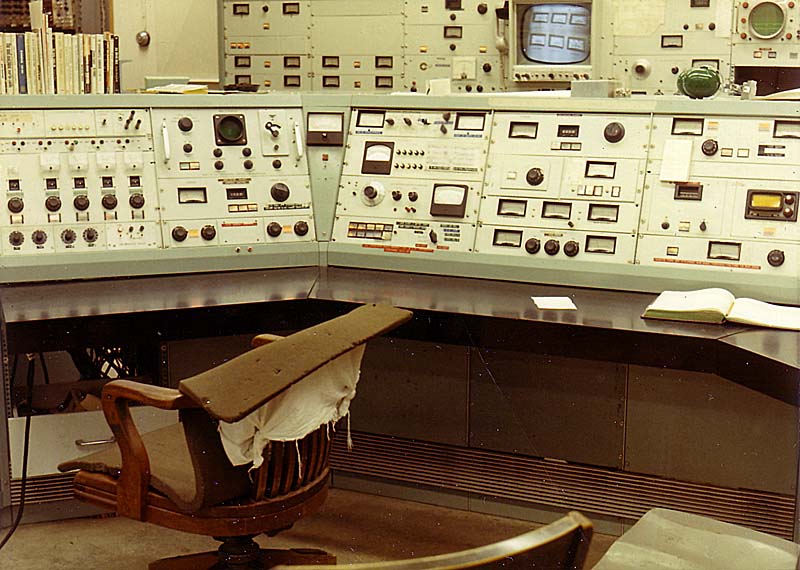
The Williams Laboratory of Nuclear Physics

I used to sit in that chair, and I knew what every one of those knobs and dials did. (And there are a lot more off to the right of where the picture ends.) I even designed and installed some of the circuits. This is where I learned that if you had warning buzzers (or peepers, clangers, honkers, or bells) you NEED one button that turns them all off, so you can think clearly enough to fix the problem.
This was the tandem Van de Graaff accelerator, where all of us migrated after they shut down the linear accelerator nearby. I have good memories of both, but the most vivid memories come from the old linac, which had been built just after WWII with a lot of military surplus radar parts. It had three tanks, and was capable of a 68 MeV proton beam if all of them were going. But we normally only ran the first two tanks, and made do with a 40 MeV beam.
There was a large analyzing magnet at the end of the beamline, set on a naval-surplus gun turret so it could easily be turned into position. The beamline wasn't very clean, and we had a lot of radioactivity, so we had a huge supply of lead bricks that we used to make radiation shields as needed. One Monday we came to work, and found that somebody had broken in and stolen all four tons of lead bricks. (This is the origin of a line on page two of Icarus has a bad week - "I'm not going to steal ten tons of anything - I'll rob a bank and we'll buy the stuff." And they were talking about radiation shielding, too!)
The linac is also where I had the most science-fiction moment of my life. Apollo 11 was about to land on the moon. Somebody had rigged an antenna and brought the signal down to the control room to be displayed on one of the TV monitors. It happened to be my shift, so I was sitting at the control console of a great Metropolitan atom-smasher, watching the first moon landing, surrounded by all kinds of enthusiastic scientists making appropriate comment.
It don't get any better than that.
